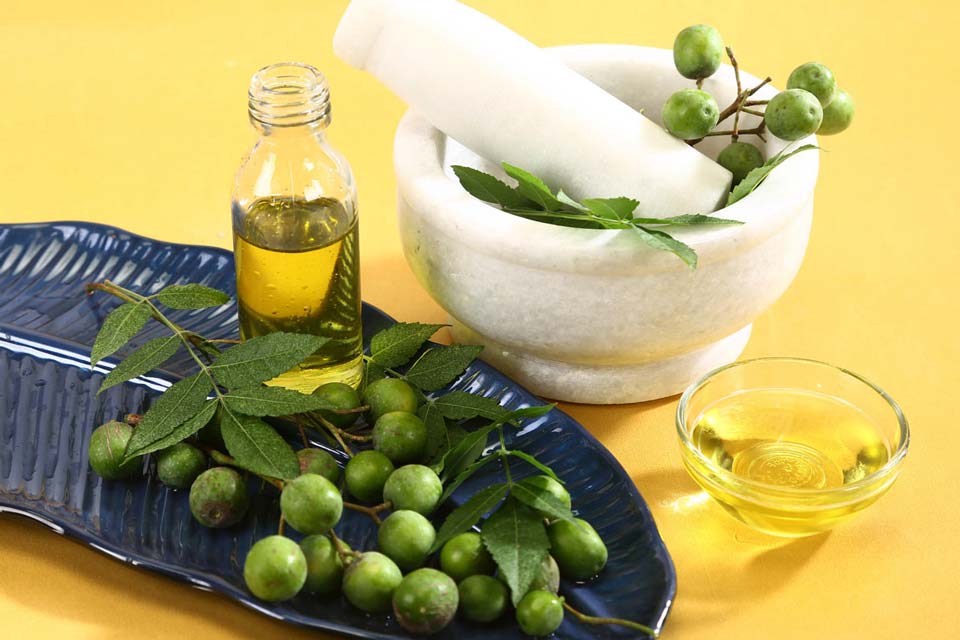Herbs and Fruits Used In Traditional Medicine That Contain Quercetin

Many medicinal herbs used in traditional medicines such as Ayurveda, Kampo, Unani, Traditional Chinese Medicine(TCM), and Native American contain quercetin.
Some of these have been tested in lab, animal, and clinical studies for their effectiveness:
| Ayurveda |
Quercetin Source
Common Name: Indian Gooseberry, Ᾱmalakῑ
Scientific Name: Emblica officinalis
Sources: Fruit, seeds, and juice are used ripe, unripe, pickled, dried, boiled, liquefied, dried and made into an oil.77
|
Traditional Uses
- Pacifies vata, pita, and kapha doshas.77
- Juice from unripe fruit applied topically for pink eye.77
- Pickled unripe fruit eaten to stimulate appetite for anorexia.77
- Digestive, intestinal, and colon problems, including diarrhea and indigestion.77
- Relieves symptoms of respiratory infections (e.g., stuffy nose, fever).77
- Heavy menstrual periods and vaginal discharge.77
- Heart disease .77
- Macular degeneration.77
- Fresh juice to boost the immune system , as are dried and powdered seeds mixed with ashwagandha .77
- Combined with other herbs for liver problems such as hepatitis and cirrhosis.77
- Protection from side effects of chemotherapy and radiation cancer treatments.77
- Oil applied to head or dried form taken internally to help with hair loss and improve condition of hair.77
|
Modern Evidence
- In the lab: Antiviral.77
- Animal studies: Anti-inflammatory, adaptogenic properties, immune-boosting, antitumor.77
- Clinical human studies: Significantly reduced cholesterol levels.77
|
| |
Quercetin Source
Common Name: Nimba, Neem
Scientific Name: Melia azadirachta
Sources: Bark, seeds, and leaves are used both internally and topically; common ingredient in Ayurveda herbal formulas; also used with aromatherapy.77
|
Traditional Uses
- Pacifies pita and kapha doshas.77
- Taken with milk for jaundice.77
- Used as incense with other herbs for mental disorders.77
- Mixed with other herbs and applied as a paste for gout, scabies, and eczema.77
- Oral formulations with other herbs to treat chicken pox, colic, obesity, acid reflux, and fever.77
|
Modern Evidence
- In the lab: Antiviral and antifungal.77
- Animal studies: Antiviral, immune-boosting, lowers blood pressure, anti-inflammatory, antitumor, reduces anxiety, increases fertility.77
- Clinical human studies: Significantly reduced symptoms of ulcers, lowered bad(LDL) cholesterol and increased good(HDL) cholesterol levels, cavity and plaque-reducing, 97% cure rate for scabies, diluted with oil as an effective insecticide against mosquitos.77
|
| Unani Tibb |
Quercetin Source
Common Name: Dudhi Kalan, Milkweed
Scientific Name: Euphorbia hirta
Preparation: The whole plant is typically used, dried (in the oven at 45ºC or air-dried in the shade) and powdered.78
|
Traditional Uses
- Intestinal parasitic infections.78
- Bowel problems, such as diarrhea.78
- As an expectorant and cough suppressant.78
- Stimulates milk production in nursing mothers.78
- Gonorrhoea.78
|
Modern Evidence
- In the lab: Antimicrobial, antioxidant, antifungal, and antiviral, antitumor.79-80
- Animal studies: Anti-inflammatory for ear infections and asthma, reduced diarrhea.79-80
- Clinical human studies: Cured amoebic dysentery in 83-92.5% of patients in two studies.80
|
| |
Quercetin Source
Common Name: Capers
Scientific Name: Capparis spinosa
Preparation: Dried and pickled fruit, tea made from buds and leaves, and topical pastes from root bark are all used.81
|
Traditional Uses
- Whole dried fruit swallowed with water for high blood pressure .81
- Tea for respiratory infections, such as the common cold.81
- Topical paste for arthritic joints, eye infections, and skin rashes (e.g., eczema).81
- Taken orally for anemia, rheumatoid arthritis, gout, liver and gastrointestinal problems, pain relief, cataracts, kidney stones, and as a diuretic.81
|
Modern Evidence
- In the lab: Antioxidant, antimicrobial and antiviral against HIV , protection against UV radiation , anti-inflammatory, antitumor activity against breast and liver cancer cell lines.81
- Animal studies: Anti-inflammatory, helps with cartilage damage, antihistamine, reduces cholesterol levels.81
- Clinical human studies: Antioxidant, anti-inflammatory, and immune boosting effects in patients with cirrhosis of the liver; inhibit fibrotic activity in systemic sclerosis; antiviral and immune-stimulating effects specific to herpes.81
|
| Kampo and TCM |
Quercetin Source
Common Name: British yellowhead, meadow fleabane, Xuan Fu Hua
Scientific Name: Inula britannica
Sources: Flowers, leaves, and stems are all used.82
|
Traditional Uses
- With other herbs to alleviate nausea and hiccups.82
- Flowers used to treat bronchitis, hepatitis, cancer , and asthma.82
|
Modern Evidence
- In the lab: antioxidant, antitumor, anti-inflammatory.82
- Animal studies: Anti-inflammatory effects protective of the liver, lungs, and blood vessels.82
|
| Native American Medicine |
Quercetin Source
Common Name: Blueberry
Scientific Name: Vaccinium corymbosum, ashei, and augustifolium
Sources: Fresh fruit and juice, dried fruit, leaves, roots.
|
Traditional Uses
- Blood strengthener.83
- Juice used to treat coughs.83
|
Modern Evidence
- In the lab: Antioxidant and anti-inflammatory effects against factors linked to heart disease ; antibacterial protection from urinary tract infections; and antitumor activity against hormone-sensitive prostate cancer cells.27
- Animal studies: Improves symptoms of Alzheimer’s disease, including memory loss and coordination problems; protects against brain damage caused by stroke.27
- Clinical human studies: Slows down vision loss.83
|
Disclaimer: This website is not intended to replace professional consultation, diagnosis, or treatment by a licensed physician. If you require any medical related advice, contact your physician promptly. Information presented on this website is exclusively of a general reference nature. Do not disregard medical advice or delay treatment as a result of accessing information at this site.
Conjunctivitis.
Menorrhagia.
Leucorrhoea.
About 115ºF.

